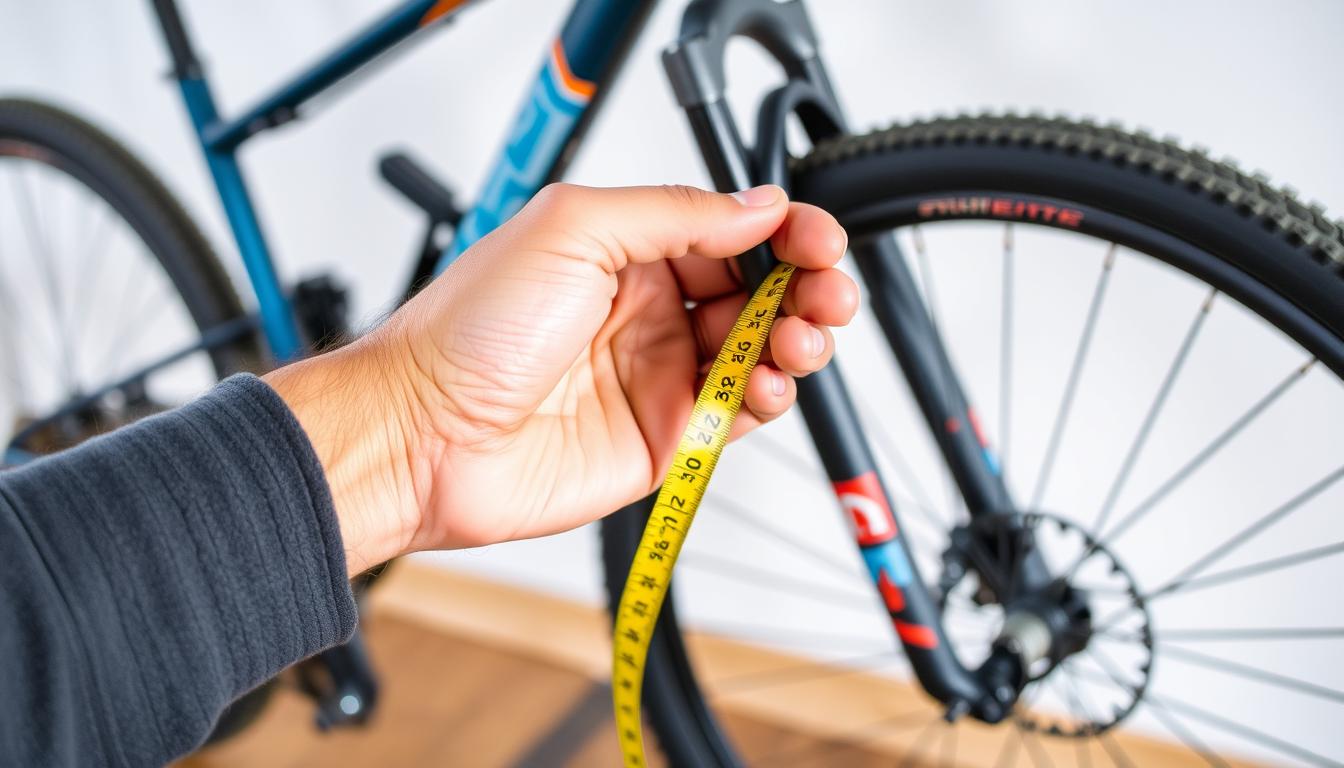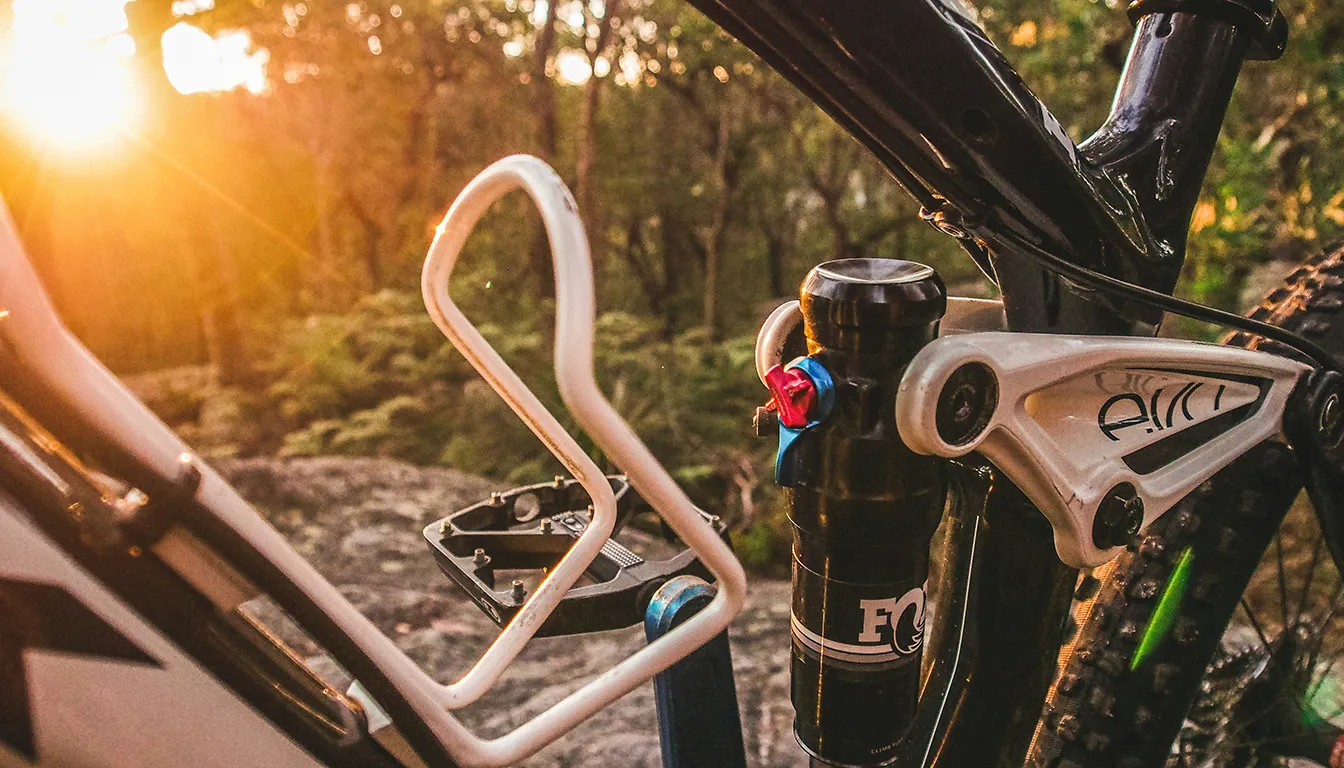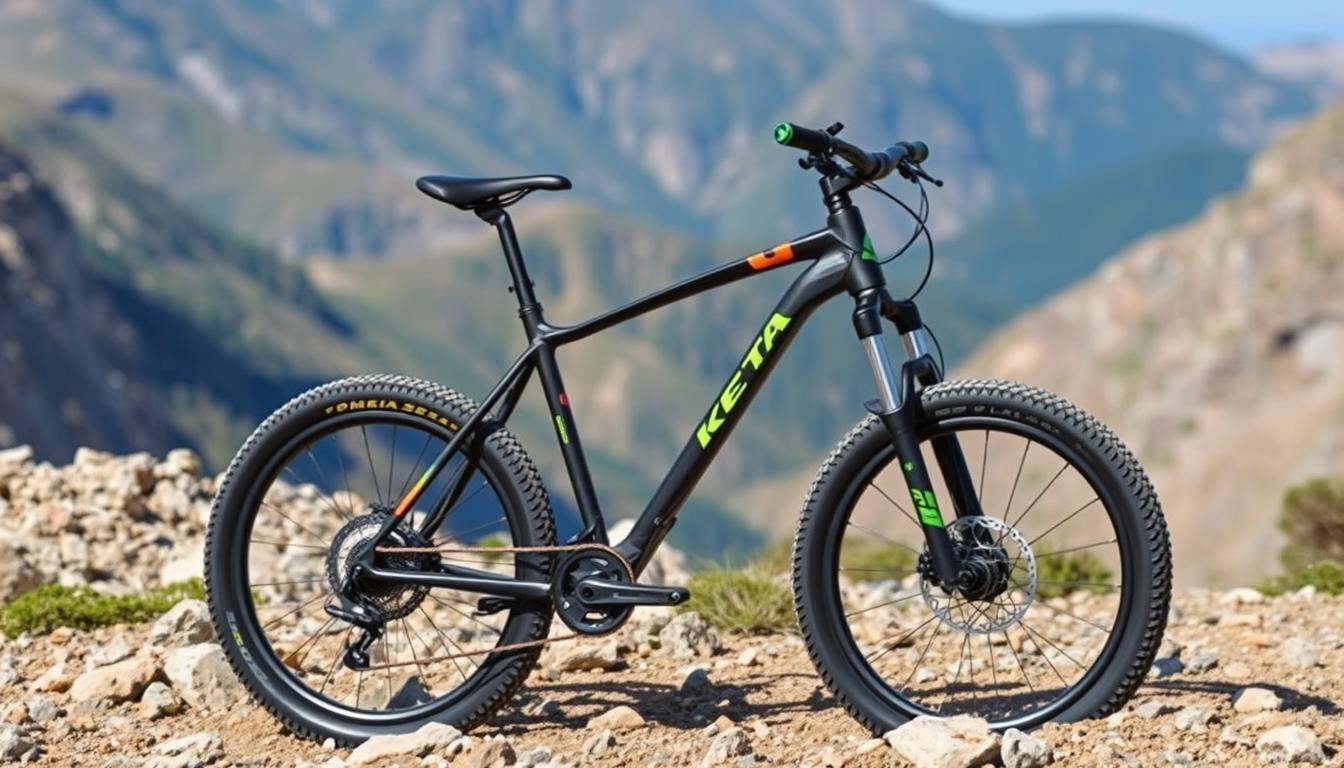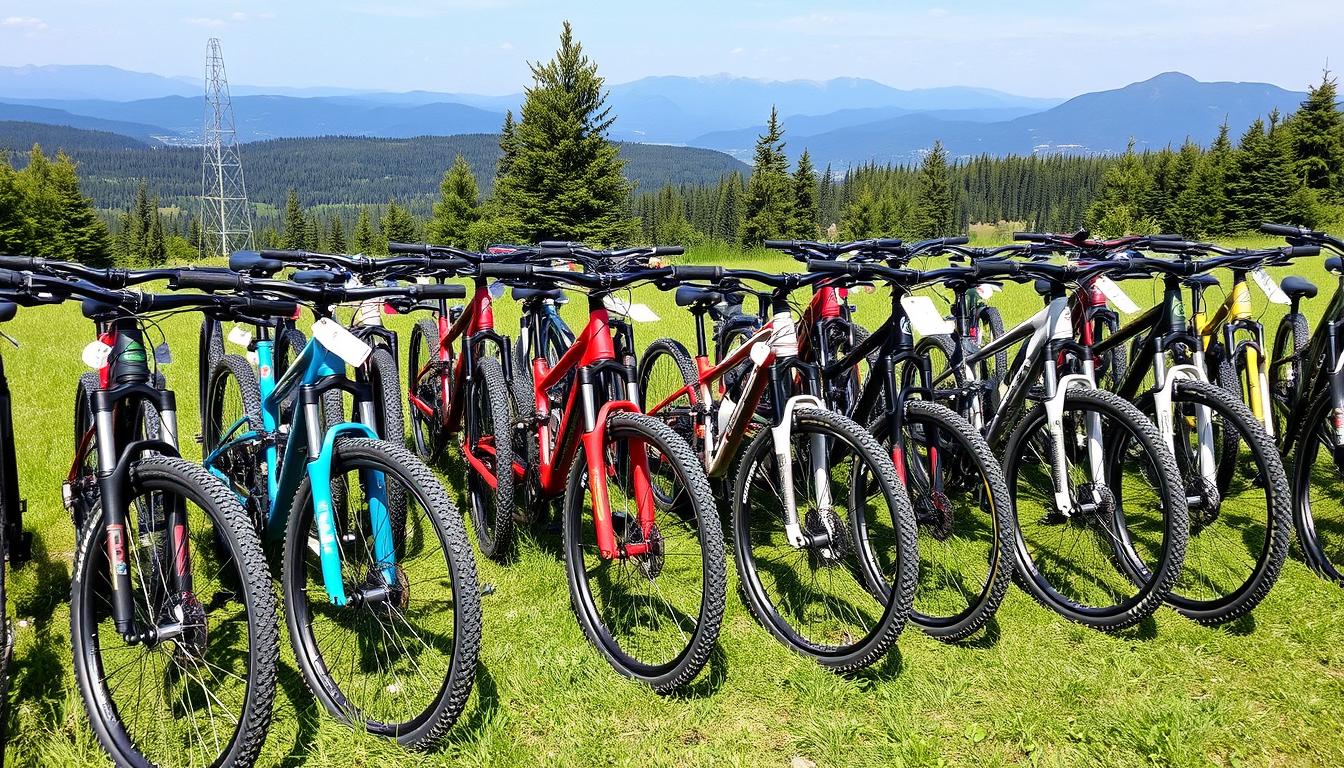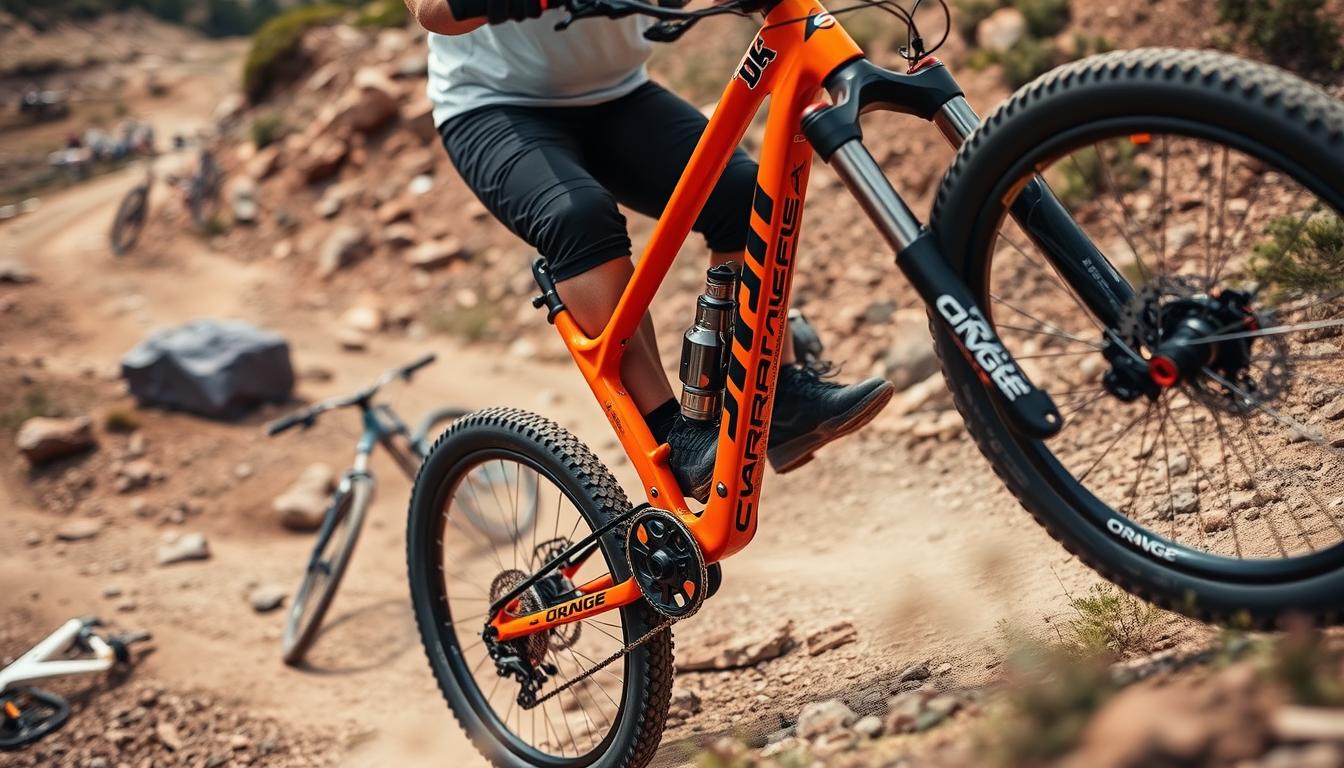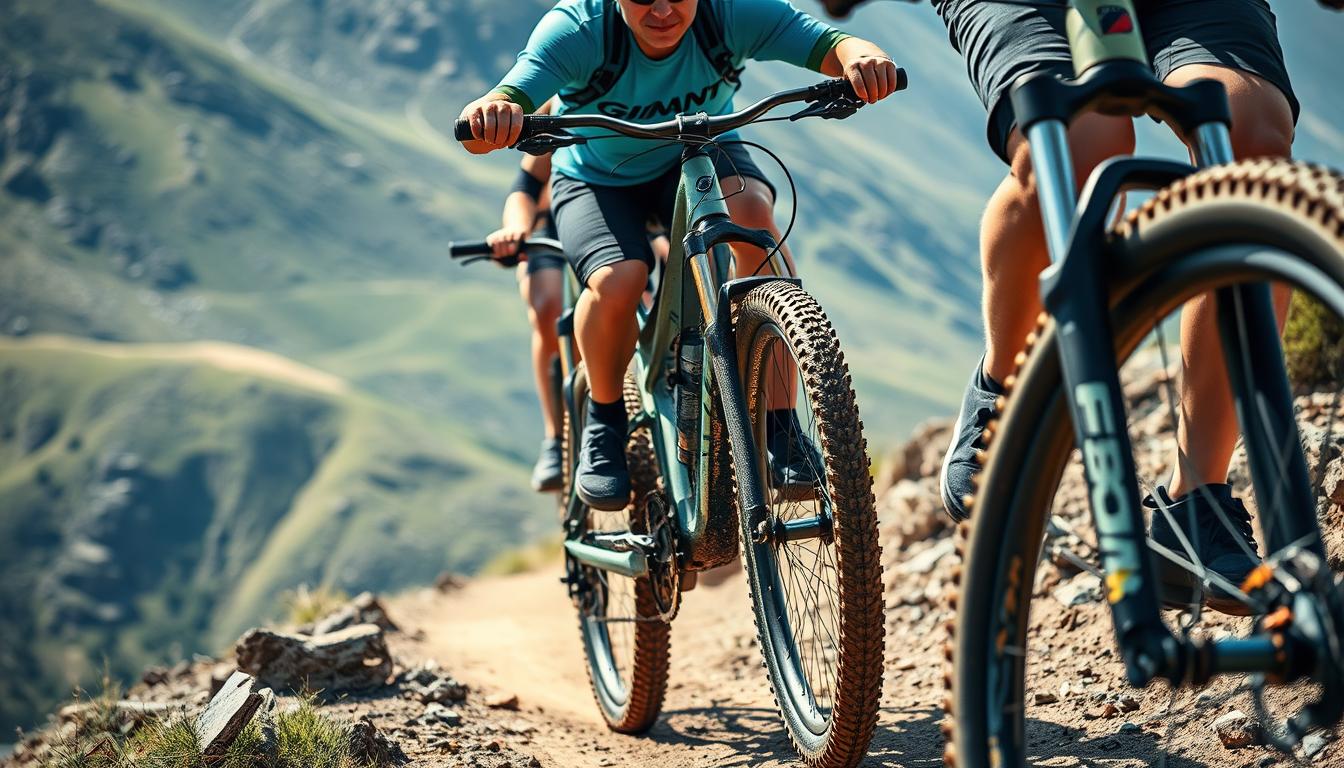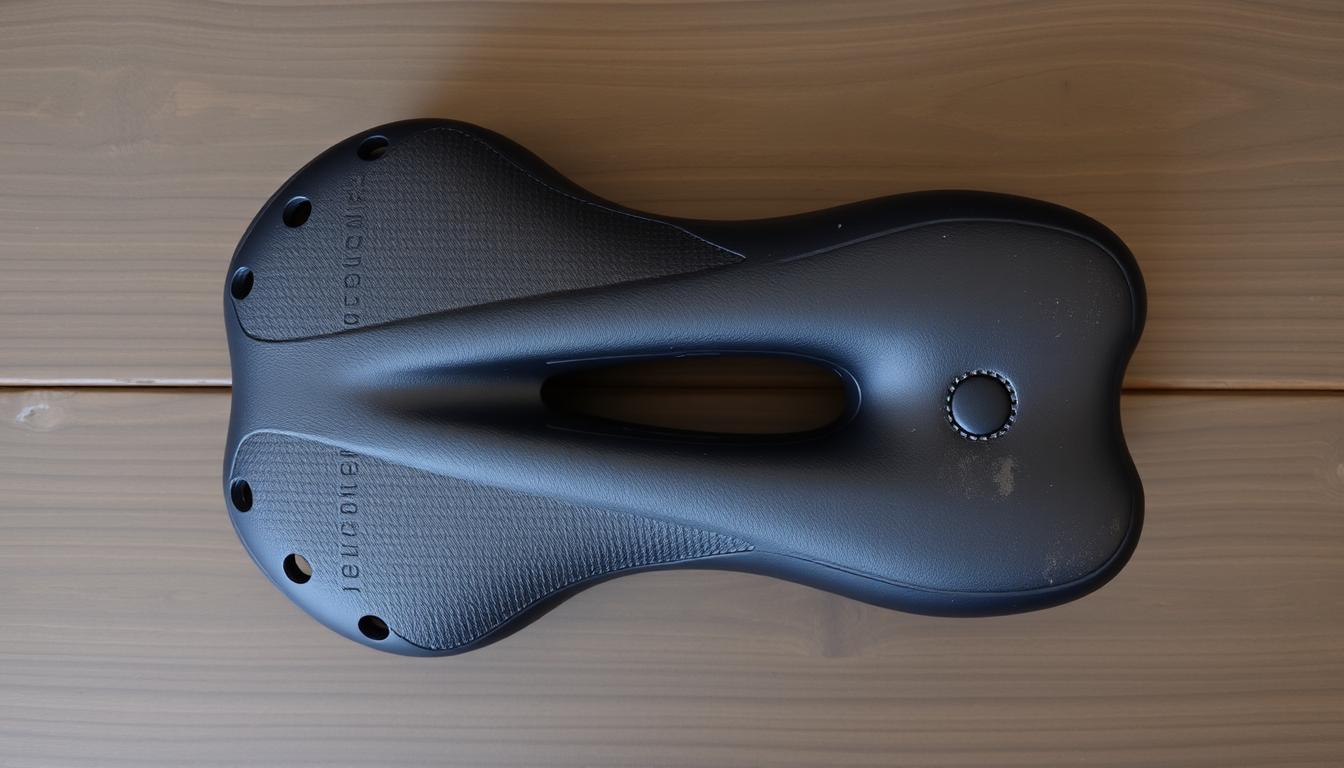Choosing a mountain bike can feel overwhelming, with so many options out there. Since the 1980s, men’s mountain bikes have greatly advanced. They now feature advanced technologies and designs. These improvements boost both performance and comfort. It’s crucial to know about the different types of mountain bikes. This knowledge helps you find the best one for your riding style.
This guide is here to give you key mountain biking advice. We’ll cover your riding habits, what kind of terrain you like, and how to pick the right bike frame size. Picking the right bike makes riding trails more fun. It also makes sure your bike lasts longer without costly maintenance.
Understanding the Types of Mountain Bikes
Mountain biking is full of excitement, and picking the perfect bike is essential. Different mountain bikes suit different terrains and riding styles. Knowing about these types can help you choose the right bike for you.
Cross Country Mountain Bikes
Cross country bikes focus on efficiency and lasting power. They are light, weighting about 22-26 lbs, making them great for climbing and covering long distances. Their suspension is relatively short, about 100-120mm, which helps with handling on easier trails. These bikes are ideal for riders who value speed and manoeuvrability over difficult descents. For detailed information on mountain bike types, click here.
Trail and All-Mountain Bikes
Trail and all-mountain bikes are known for being versatile and sturdy. They weigh between 26-31 lbs and have a mid-level suspension, from 120-150mm. This setup is great for both going up and down various terrains. Their balanced design ensures a comfortable journey on many different trails.
Downhill and Freeride Mountain Bikes
Downhill and freeride bikes are made for those who love excitement and tough trails. They are heavier than most bikes, usually over 30 lbs. These bikes have the longest suspension travel, 180-250mm for downhill and 165-200mm for freeride. Targeted at skilled riders, they’re perfect for challenging descents but not made for climbing.
Electric Mountain Bikes
Electric mountain bikes blend classic biking with new technology. They have pedal-assist systems that help with climbing and make rides last longer. These bikes suit all fitness levels, opening up mountain biking to more people. However, they are heavier because of their extra features, which is something to think about when choosing one.
Key Considerations for Choosing a Men’s Mountain Bike
Choosing a men’s mountain bike involves several key factors. Think about your riding habits, bike budget, and the type of terrain you like. These factors guide you to the perfect bike.
Where and How Often Will You Ride?
Start by thinking about how often you’ll bike and where. Will you stick to city paths, enjoy relaxed trips, or go for tough mountain paths? Bikes for regular use need to be stronger than those for occasional outings. They must handle rougher conditions well.
Your Budget: What to Expect
The amount you plan to spend affects your bike’s quality and features. Good mountain bikes begin at about £800, yet top-end models can cost much more. Higher prices mean better materials and specs. Remember, you might also need to budget for extra accessories and parts, especially if you’re new to this sport.
Identifying Your Riding Style and Terrain Preferences
Understanding your riding style and preferred terrain is crucial. If thrilling, technical trails are your thing, you’ll need a capable bike. But if you prefer easier routes, look for a bike suited for those. There’s a bike for every type of rider and matching your bike to your terrain preference makes biking more enjoyable.
Finding the Right Frame Size for a Men’s Mountain Bike
Picking the right mountain bike frame size is key for both comfort and performance. The right frame makes it easier to control the bike and ride efficiently. This helps you enjoy riding on trails more. When choosing a size, consider your height, inseam measurement, and the bike’s frame geometry.
Measuring Your Height and Inseam
Start by finding out your height and inseam length for bike sizing measurement. To do this, stand up straight to measure your height. Then, measure your inseam by going from your crotch to the floor. This info will help you pick the right mountain bike frame size. For example, if you are between 4’10” and 5’2″, you might need an XS frame (13″ – 14″ or 33cm – 37cm). And if you’re between 6’2″ and 6’4″, an XL frame (21″ – 22″ or 53cm – 57cm) could be best. Getting the size right means more comfort while you ride, which makes biking more enjoyable.
Understanding Frame Geometry and Sizing Charts
It’s important to understand bike frame geometry and refer to sizing charts. Sizing can differ across brands, so always check brand-specific guides. Terms like ‘reach’ and ‘stack’ are crucial for finding a good fit. A shorter frame can make a bike nimbler, while a longer frame keeps it stable at high speeds. Also, consider the head angle and chainstay length to find a bike that matches your size and preferred riding style. for more detailed information on choosing the right bike, check out this resource.
Choosing Material and Components for Your Men’s Mountain Bike
Choosing the right materials and parts is key for the best mountain bike experience. There are many options to pick from. Each one offers unique benefits that can improve your performance and make rides more comfortable.
Frame Materials: Carbon vs Aluminium vs Steel
Mountain bike materials are vital for how the bike performs. Carbon fibre frames are both light and strong. They’re great for those who race because they absorb road bumps for a smoother ride. Aluminium offers a great mix of lightweight and affordability; it’s suitable for different biking styles. Steel, especially chromoly, is affordable, durable, and comfy on tough terrains. It’s a bit heavier than other materials, though.
Suspension Options: Hardtail vs Full-Suspension
Choosing between hardtail and full-suspension mountain bikes is a big topic. Hardtails, with only front suspension, are good at climbing and efficient pedalling. They’re best for easy trails and cross-country. Full-suspension bikes, with both front and rear shocks, provide better control and comfort on rough terrain. They handle obstacles well but need more care. It’s important to know your riding preference to choose wisely.
Essential Components: Gearing and Braking Systems
Gearing is crucial for managing hills and slopes. Modern gears help you shift smoothly, improving your ride. Braking systems are just as important for your safety and handling. Hydraulic disc brakes are recommended for their strong stopping power, especially on steep trails. The right mix of gears and brakes ensures your bike is ready for any challenge.
Conclusion
When looking for the right men’s mountain bike, think about what you need and like. It’s important to know the different types, such as cross country, trail, or downhill bikes. Choose one that fits how and where you ride, to improve your biking fun.
This guide helps you understand the wide range of mountain bikes. You’ll learn how to pick a frame size and know about materials and parts. Every detail is crucial for enjoying your time on the trails. Remember, no single bike fits all situations. Finding a good mix of what you need and want will make your rides more enjoyable.
Finding the right men’s mountain bike is an exciting part of the journey. Take pleasure in looking at the options. You’ll discover a bike that fulfills your needs and brings joy and confidence on every ride. Start your biking adventure with excitement and look forward to great experiences!
FAQ
What type of mountain bike is best for beginners?
For newcomers, a trail bike is ideal. It’s versatile and sturdy, great for varied landscapes. It balances well without too many complex features.
How do I determine the right frame size for my mountain bike?
To find the right frame size, measure your height and inseam. Check sizing charts from bike makers since sizes vary by brand. This makes riding more comfy and efficient.
What is the difference between hardtail and full-suspension mountain bikes?
Hardtail bikes have front suspension but no rear, making them lighter and simpler to look after. They’re good for easy trails. Full-suspension bikes, with both front and rear suspension, give better control and comfort on rough trails. They tend to be heavier and need more upkeep.
How much should I expect to spend on a men’s mountain bike?
Quality men’s mountain bikes start from £800. Prices rise with better materials and features like gears and brakes. Plan extra for must-have accessories, especially if you’re new.
Can electric mountain bikes help me ride longer distances?
Yes, e-MTBs have pedal-assist tech that boosts your pedalling power. They make uphill rides easier and longer journeys manageable. They open up mountain biking to more people, regardless of fitness level.
What should I consider when choosing the terrain for riding?
Think about your riding style and preferred terrains, like city paths, forests, or mountains. Your bike choice should match the conditions you plan to face.
What materials are best for mountain bike frames?
Frame material impacts performance and weight. Carbon is light and strong but costly; aluminium offers a good mix of weight and price. Steel, though heavier, is tough and comfy for rugged terrain.
